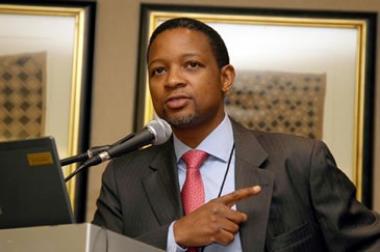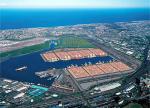Transnet to inject R33 billion to boost port operations
 Transnet Port Terminals CEO Karl Socikwa
Transnet Port Terminals CEO Karl Socikwa
The South African port operator, Transnet Port Terminals (TPT), has committed a capital expenditure of R33 billion over the next seven years to encourage economic growth and efficiencies in its port terminal management.
The investments fall within the Transnet Market Demand Strategy (MDS) announced by President Jacob Zuma during his State of the Nation Address in February, where he outlined the South African government’s focus on infrastructure development.
In total, the Transnet Group will spend R300 billion in port and rail capital projects until 2018/19.
TPT CEO, Karl Socikwa said on Wednesday that the MDS has major implications for Transnet division’s responsibility to facilitate unconstrained growth, unlock demand and create world-class port operations through improved efficiencies.
“It entails an acceleration of our capacity creation programmes at all our major terminals, to ensure that we are able to grow the economy and make the ports as competitive and efficient as possible,” said Socikwa.
He explained that the bulk of TPT’s spend – 71 percent of the R33 billion seven year investment pipeline would be focused on expansion projects and creating capacity to meet projected demand, while the remaining 29 percent would go towards capital sustaining projects aimed at achieving operating norms and upholding service delivery.
“The latter includes the replacement of aged equipment as well as the refurbishment of existing equipment,” he said.
Some of the major capacity creating projects to be embarked on by TPT until 2018/19 will include:
- The expansion of Durban Container Terminal Pier 1, which will increase the capacity of the terminal from 700 000 Twenty-foot Equivalent Unit (TEUs) to 820 000 TEUs by next year and eventually 1.2 million TEUs by 2016/17
- The extension of the North quay at Durban Container Terminal Pier 2, which will help increase the capacity from 2.1 million TEUs in 2011/12 to 2.5 million TEUs by 2013/14 and 3.3 million TEUs by 2017/18
- Container capacity is being created in other terminals like Durban Ro-Ro and Maydon Wharf Terminal through the acquisition of new equipment including mobile cranes and various infrastructure upgrades.
- The expansion of Ngqura Container Terminal, which has been earmarked as a transshipment hub and will be expanded from 800 000 TEUs to 2 million TEU’s by 2018/19 to meet anticipated volumes.
- The expansion of the iron ore bulk facility in Saldanha, which has undergone significant expansion in recent years.
- The creation of additional manganese capacity by relocating the current export facility in Port Elizabeth (5.5 million tons capacity) to a newly created two berth manganese facility at the Port of Ngqura by 2015/16, creating capacity of 12 million tons per annum from 2016/17.
- Sustaining capex of R3.7 billion has been set aside for the ageing Richards Bay Terminal after minimal investment over the last 10 years.
- Approximately R1.2 billion will be spent on capacity creating projects in Richards Bay, such as storage areas. TPT will also look at reengineering of the port to create additional capacity for bulk products at the terminal.
Socikwa added that these investments into South Africa’s commercial port operations will continue to provide a springboard for growth.
“We will implement specific initiatives to grow volumes and use capacity as it comes on stream, while improving operational efficiencies and growing personnel, thus ensuring the success of the MDS.”
















